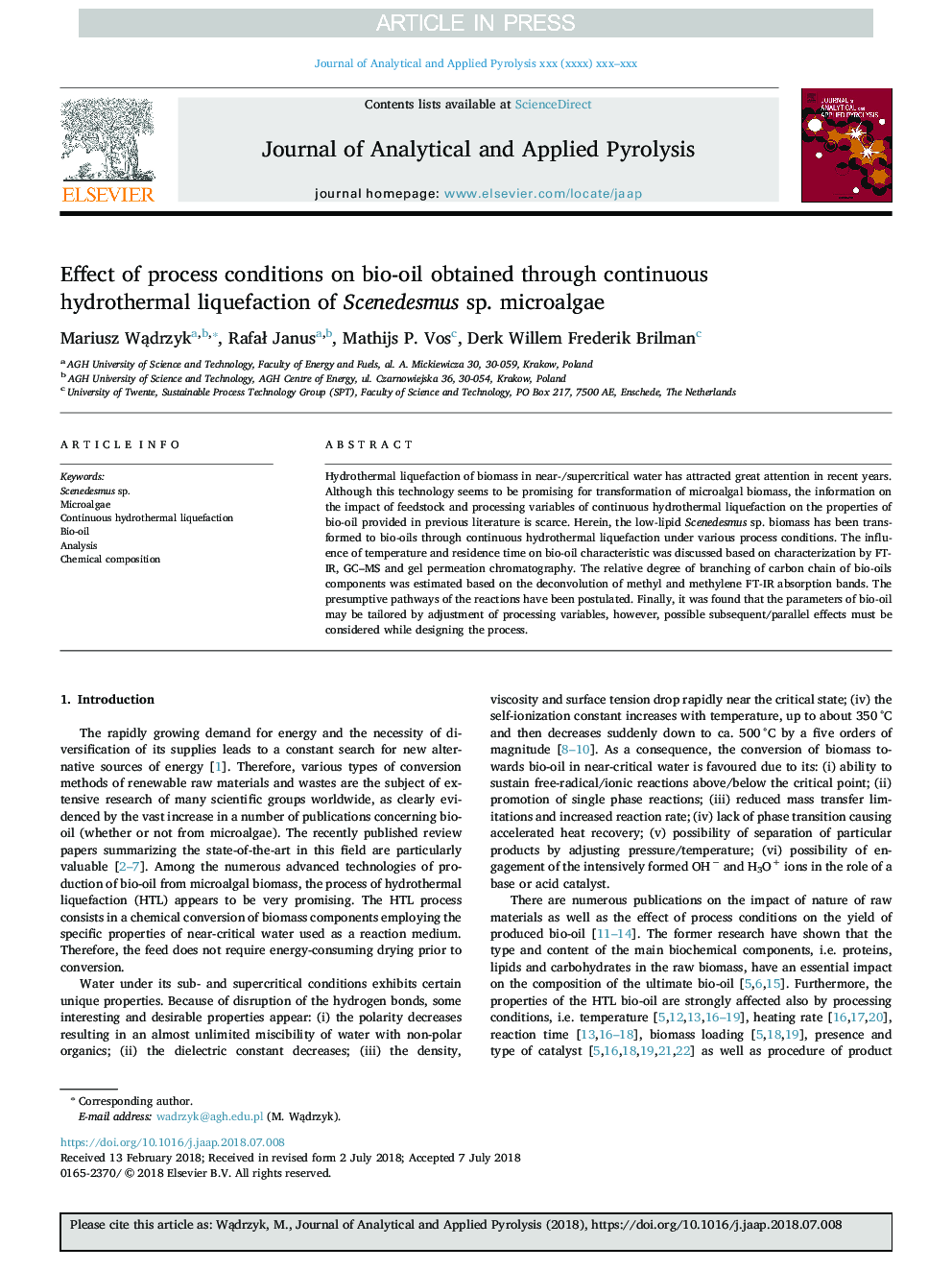| Article ID | Journal | Published Year | Pages | File Type |
|---|---|---|---|---|
| 8954864 | Journal of Analytical and Applied Pyrolysis | 2018 | 12 Pages |
Abstract
Hydrothermal liquefaction of biomass in near-/supercritical water has attracted great attention in recent years. Although this technology seems to be promising for transformation of microalgal biomass, the information on the impact of feedstock and processing variables of continuous hydrothermal liquefaction on the properties of bio-oil provided in previous literature is scarce. Herein, the low-lipid Scenedesmus sp. biomass has been transformed to bio-oils through continuous hydrothermal liquefaction under various process conditions. The influence of temperature and residence time on bio-oil characteristic was discussed based on characterization by FT-IR, GC-MS and gel permeation chromatography. The relative degree of branching of carbon chain of bio-oils components was estimated based on the deconvolution of methyl and methylene FT-IR absorption bands. The presumptive pathways of the reactions have been postulated. Finally, it was found that the parameters of bio-oil may be tailored by adjustment of processing variables, however, possible subsequent/parallel effects must be considered while designing the process.
Related Topics
Physical Sciences and Engineering
Chemistry
Analytical Chemistry
Authors
Mariusz WÄ
drzyk, RafaÅ Janus, Mathijs P. Vos, Derk Willem Frederik Brilman,
